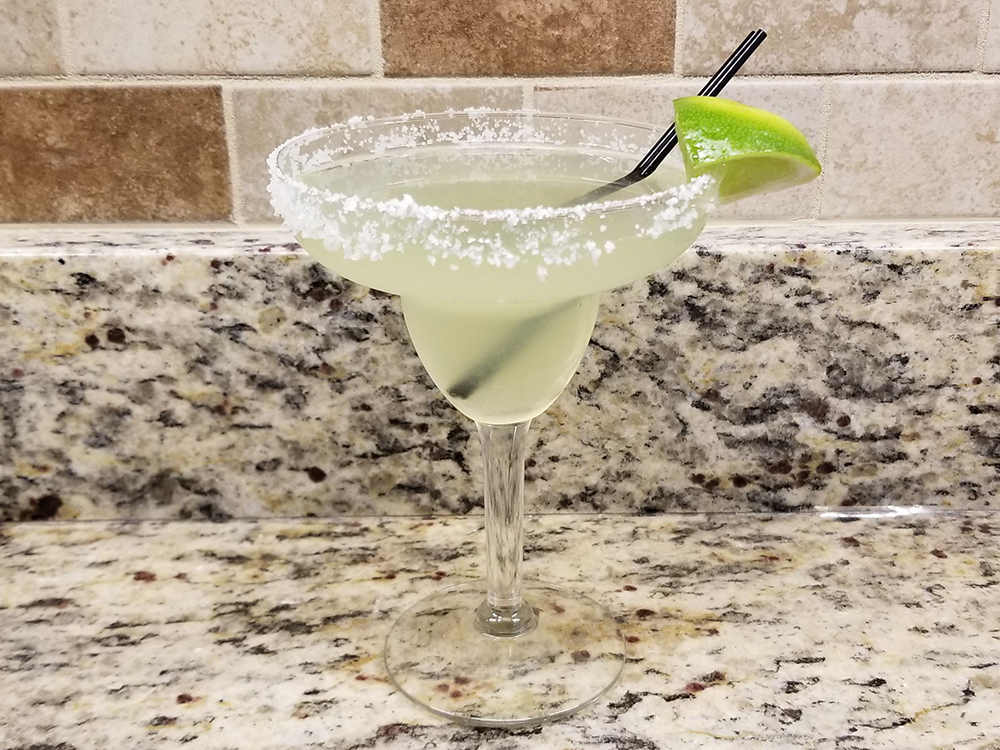By Julia Stacey Reilly
Cinco de Mayo, sometimes mistaken for Mexico’s Independence Day on Sept. 16, commemorates Mexico’s victory over the French at the Battle of Puebla in 1862. Mexico won the battle but was losing the war until the United States intervened and Napoleon III decided to withdraw French troops from Mexico in 1866.
More popular in the United States than in Mexico, Cinco de Mayo has become associated with the celebration of Mexican American culture and heritage. My favorite way to celebrate is with one of Mexico’s most popular exports, tequila. Tequila is a distilled spirit made from the blue agave plant grown in Mexico. Just as with wine grapes, the terroir of a specific location affects the flavor of the agave, producing some sweeter and some more herbaceous. Similar to wine production, Mexican laws require a designation of origin, or DO, within specific designated geographic areas, primarily in the state of Jalisco.
The three types of tequila that refer to its aging are Blanco, or Silver, Reposado, and Añejo. Blanco tequila is bottled after distillation, no aging is required. Reposado tequila is aged between two and 12 months in oak barrels. Añejo is aged in oak from one to three years, or longer as in Extra Añejo.
Here are ten different tequilas from mid- to high-end price range that I’ve enjoyed in my travels.
- Casa Dragones Joven
This is a super-premium tequila. It’s a small batch blend of 100% blue agave silver and extra aged tequila rested in new American oak barrels. On the palate, it’s smooth and silky, with a hint of spice on the finish. Although it is rested in oak, oak influence in aroma and flavor is minimal. So subtle, it’s hard to believe it’s 80 Proof.
- Clase Azul Reposado
This one is sold in an attractive, tall blue and white bottle. It is aged for eight months in American whiskey barrels. The oak aging imparts maple and vanilla flavors that blend seamlessly with the 100% blue agave fruit flavors. It is well-balanced, complex, and very expensive.
- Avion Reserva 44
This drink is a small batch extra Añejo tequila made with highland agave. It is aged in oak barrels for three years, then aged for an additional month in small barrels which are rotated daily. The oak is expressed in a warm amber color and rich oaky notes countered with sweet agave fruit, and hints of orange rind and coriander.
- Don Julio Añejo
This option is aged for 18 months in relatively small batches in American white oak. On the nose are toasted oak and caramel notes with agave fragrances taking a back seat. On the palate are flavors of dried apricot, black tea, and vanilla. The finish brings out a peppery, smoky quality. Don Julio is one of my favorite tequilas for drinking at home, neat in a crystal brandy snifter.
- Don Julio 70th Anniversary Añejo
This is a fine example of cristalino, a new style of tequila recently introduced in the U.S. market. Cristalino is essentially Añejo that has been filtered (often through charcoal) to remove the naturally occurring color and oaky qualities imparted by the barrel. The goal is to create a tequila with the complexity and character of Añejo and the crispness of Blanco. Don Julio 70th achieves this goal with very light vanilla and caramel notes alongside bright agave and citrus flavors. The overall character is smooth and subtle but personally, I miss the deeper oaky appeal of a good añejo.
- Patron Extra Añejo
Made from 100% Weber Blue Agave, this is aged in American, French, and Hungarian oak barrels for at least three years. A deep amber pour in the glass begins with whiskey smoke and aromas of oak and maple. The palate is well-balanced with flavors of agave, honey, and vanilla. The essence of dried fruit lingers on a long finish. The overall experience reminds me very much of sipping cognac. Its complexity and smoothness make this extra Añejo a personal favorite and one we recently added to our home collection.
- Kah
I would buy this Day of the Dead-themed bottle for the design alone. Inside, the tequila is quite good also. We tasted the Reposado, made from 100% blue agave and aged for two to 12 months in American oak casks. Barrel char is evident on the nose. On the palate is light agave fruit with a floral note. Overall, it is well-balanced and moderately complex with a long finish.
- Herradura
Though now owned by a conglomerate, this was a family business since the 19th century. Their website claims that Casa Herradura was the first to introduce Añejo to the world. Herradura Añejo is aged in American White Oak barrels for 25 months (13 months longer than industry standards). In the glass, it’s rich dark amber in color with strong toasted oak aromas. The oak theme carries on to the palate with notes of caramel, nuts, and vanilla. Light agave and dried fruit flavors make a quick appearance on the finish. It’s one of the most oaky tequilas I’ve ever tasted, and if you like a super oaky Chardonnay, this may be the tequila for you.
- Tres Agaves Añejo
This tequila is made with slowly roasted, organic agaves grown in the Tequila Valley. It is aged for 18 months in repurposed Kentucky bourbon barrels and Tennessee whiskey barrels. The nose is vanilla-laden with light oak. On the palate are sweet agave fruit flavors intertwined with caramel and butterscotch. There are hints of spice and herbs on the finish.
- Los Guayabos
This is a boutique tequila maker with a well-hidden shop on the outskirts of Puerto Vallarta. They make premium Blanco, Reposado, and Añejo tequilas as well as tequila-based flavored liqueurs. Their coffee liqueur is a perfect pairing with a sugary dessert, with its roasted coffee aroma and sweet, nutty flavors. Agave lends some floral and herbal notes; however, espresso is dominant in the flavor profile. A lower alcohol by volume at 20% makes this tequila liqueur a smooth finish to a night of celebration.
Tequila is the primary spirit for making the margarita cocktail. You can try margaritas with exotic fruit juices and frozen margaritas at local bars and restaurants such as Taco Caballito Tequileria in Cape May, but simpler recipes tend to let the tequila be the star. Here are two margarita recipes that taste great and are easy to make at home.

Primo Margarita
Margaritas are typically made with Blanco tequila for a clear appearance that is appealing to the eye. I prefer using oak-aged Reposado or Añejo for the added complexity that oak aging brings to the flavor profile, such as nuances of vanilla or caramel. Patron Citronge is my triple sec of choice for margaritas. In place of a prepared lemon mixer such as Rose’s or Mr. and Mrs. T, I use my own recipe of ReaLemon and simple syrup in equal parts.
Ingredients:
- 5 ounces of Añejo tequila (Don Julio)
- 1/2 ounce of triple sec (Patron Citronge)
- 1/2 ounce of lemon mixer
- A few splashes of lime juice
- Lime wedge for garnish
- Coarse salt for the rim
Directions:
Rub the lime wedge around the rim of a margarita or rocks glass to moisten. Roll the edge of the glass over a layer of salt. Fill the glass with ice. Fill a shaker with ice and add tequila, triple sec, lemon mixer and lime juice. Shake vigorously. Pour through a strainer into the glass and garnish with lime.
El Presidente
A slight variation on the Primo Margarita, this recipe adds the orange and cognac liqueur, Grand Marnier. I prefer a good Blanco tequila such as Patron. Salting the rim is optional, as always.
Ingredients:
- 5 ounce of Blanco tequila (Patron)
- 1/2 ounce of triple sec (Patron Citronge)
- 1/2 ounce of Grand Marnier
- 1/2 ounce of lemon mixer
- A few splashes of lime juice
Directions:
Shake ingredients over ice and strain into a rocks glass.
Julia Stacey Reilly is a published author and blogger. Her book, Boozy Lifestyle, is available on Amazon and her blog can be found at BoozyLifestyle.com. She is the official Tony Mart sommelier and has earned a WSET Award in Wines. She can be reached at BoozyLifestyle@gmail.com.









